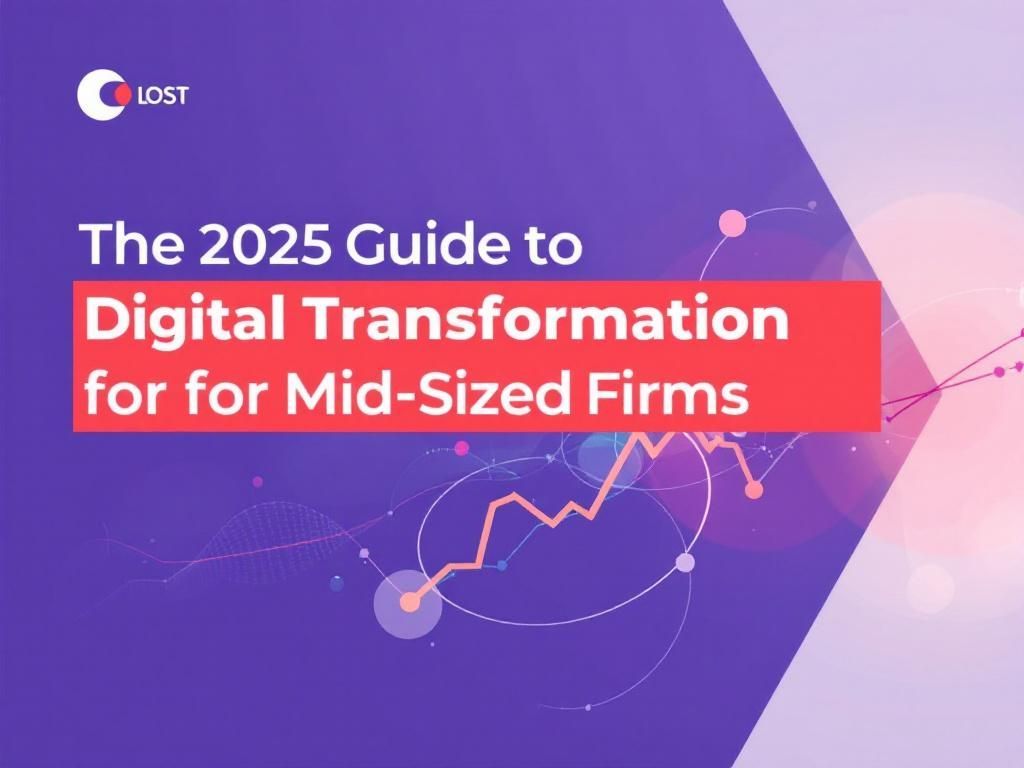Mid-Sized Firms: Embrace Digital Transformation Now
Discover why mid-sized firms must adopt digital transformation strategies today to stay competitive and thrive in a rapidly evolving market.

In a rapidly evolving technological landscape, mid-sized firms are at a critical juncture. With digital transformation becoming not just a buzzword but a necessity, these organizations must adapt to survive and thrive in their respective markets. This article will delve into the various facets of digital transformation, the benefits it brings to mid-sized companies, and the steps needed to embark on this transformative journey.
Table of Contents
Understanding Digital Transformation
Digital transformation involves integrating digital technologies into all areas of a business, leading to fundamental changes in how businesses operate and deliver value to customers. It is not merely about upgrading technology but also about altering the cultural and operational frameworks of an organization.
Key Components of Digital Transformation
- Customer Experience: Enhancing the way customers interact with the brand.
- Operational Agility: Improving internal processes and workflows.
- Culture and Leadership: Fostering a culture of innovation and adaptability.
- Workforce Enablement: Empowering employees with the right tools and skills.
Benefits of Digital Transformation for Mid-Sized Firms
Embracing digital transformation can bring significant advantages to mid-sized firms, including:
Increased Efficiency
By automating manual processes and leveraging data analytics, organizations can significantly increase their operational efficiency. This allows resources to be reallocated to more strategic initiatives.
Enhanced Customer Engagement
With improved tools and technologies, businesses can offer better support and services, leading to increased customer satisfaction and loyalty. A study by Salesforce found that 70% of customers say connected processes are very important to winning their business.
Data-Driven Decision Making
Digital transformation enables firms to harness data analytics to inform business strategies. This leads to more informed decision-making processes that can drive growth and innovation.
Competitive Advantage
In a digital-first world, companies that embrace digital transformation can outperform their competitors who are slower to adapt. This can lead to increased market share and customer base.
Steps to Embrace Digital Transformation
Embarking on a digital transformation journey can seem daunting, but by breaking it down into manageable steps, mid-sized firms can navigate the process more effectively:
1. Assess Current State
Begin by evaluating your existing processes, technologies, and organizational culture. Understanding where you currently stand will help identify gaps and opportunities for improvement.
2. Define Objectives
Set clear, measurable goals for what you hope to achieve through digital transformation. This could include improving customer satisfaction scores, increasing operational efficiency, or driving revenue growth.
3. Develop a Strategy
Create a comprehensive digital transformation strategy that encompasses technologies, processes, and employee engagement. This strategy should align with your overall business goals.
4. Invest in Technology
Identify and invest in the right technologies that will support your transformation efforts. This may involve cloud computing, artificial intelligence, or customer relationship management (CRM) systems.
5. Foster a Culture of Change
Change management is crucial in this process. Encourage a culture that embraces innovation and is open to adopting new technologies. Training programs and workshops can empower employees to adapt efficiently.
6. Monitor and Adjust
Regularly review your digital transformation initiatives and their impact on your business. Be prepared to make adjustments to your strategy based on real-time feedback and performance metrics.
Challenges to Overcome
While the benefits are clear, mid-sized firms may face several challenges on their digital transformation journey:
Resistance to Change
Employees may be hesitant to adopt new technologies or processes, leading to resistance. Effective communication and training can mitigate this issue.
Budget Constraints
Digital transformation initiatives can require significant investment. Mid-sized firms should prioritize their spending and consider phased approaches to manage costs effectively.
Technology Overload
With numerous digital solutions available, firms risk becoming overwhelmed when choosing the right tools. Careful research and planning are essential to select the most appropriate technologies.
Case Studies of Successful Digital Transformation
Examining real-world examples can provide inspiration and insights into effective digital transformation:
Company A: Streamlining Operations
A mid-sized manufacturing firm implemented a cloud-based inventory management system that reduced overhead costs by 15% and improved order fulfillment speeds.
Company B: Enhancing Customer Relations
A retail company adopted a CRM platform that enabled personalized marketing campaigns, resulting in a 25% increase in customer engagement and a 30% boost in sales.
Conclusion
As mid-sized firms navigate the complexities of the modern business landscape, digital transformation stands out as an imperative. By understanding its importance, embracing change, and strategically implementing new technologies, these organizations can position themselves for future success. The time to act is now—those who adapt will lead, while those who hesitate may fall behind.
FAQ
What is digital transformation for mid-sized firms?
Digital transformation for mid-sized firms involves integrating digital technology into all areas of business, fundamentally changing how they operate and deliver value to customers.
Why should mid-sized firms prioritize digital transformation?
Mid-sized firms should prioritize digital transformation to improve efficiency, enhance customer experiences, stay competitive, and adapt to changing market demands.
What are the key benefits of digital transformation for mid-sized businesses?
The key benefits include increased operational efficiency, better data analytics, improved customer engagement, and the ability to innovate and scale quickly.
How can mid-sized firms start their digital transformation journey?
Mid-sized firms can start by assessing their current technology, identifying areas for improvement, setting clear goals, and investing in the right tools and training for their teams.
What challenges do mid-sized firms face during digital transformation?
Challenges include limited budgets, resistance to change, lack of expertise, and difficulties in integrating new technologies with existing systems.
How can mid-sized firms measure the success of their digital transformation efforts?
Success can be measured through key performance indicators (KPIs) such as increased revenue, improved customer satisfaction scores, and enhanced operational efficiency.



